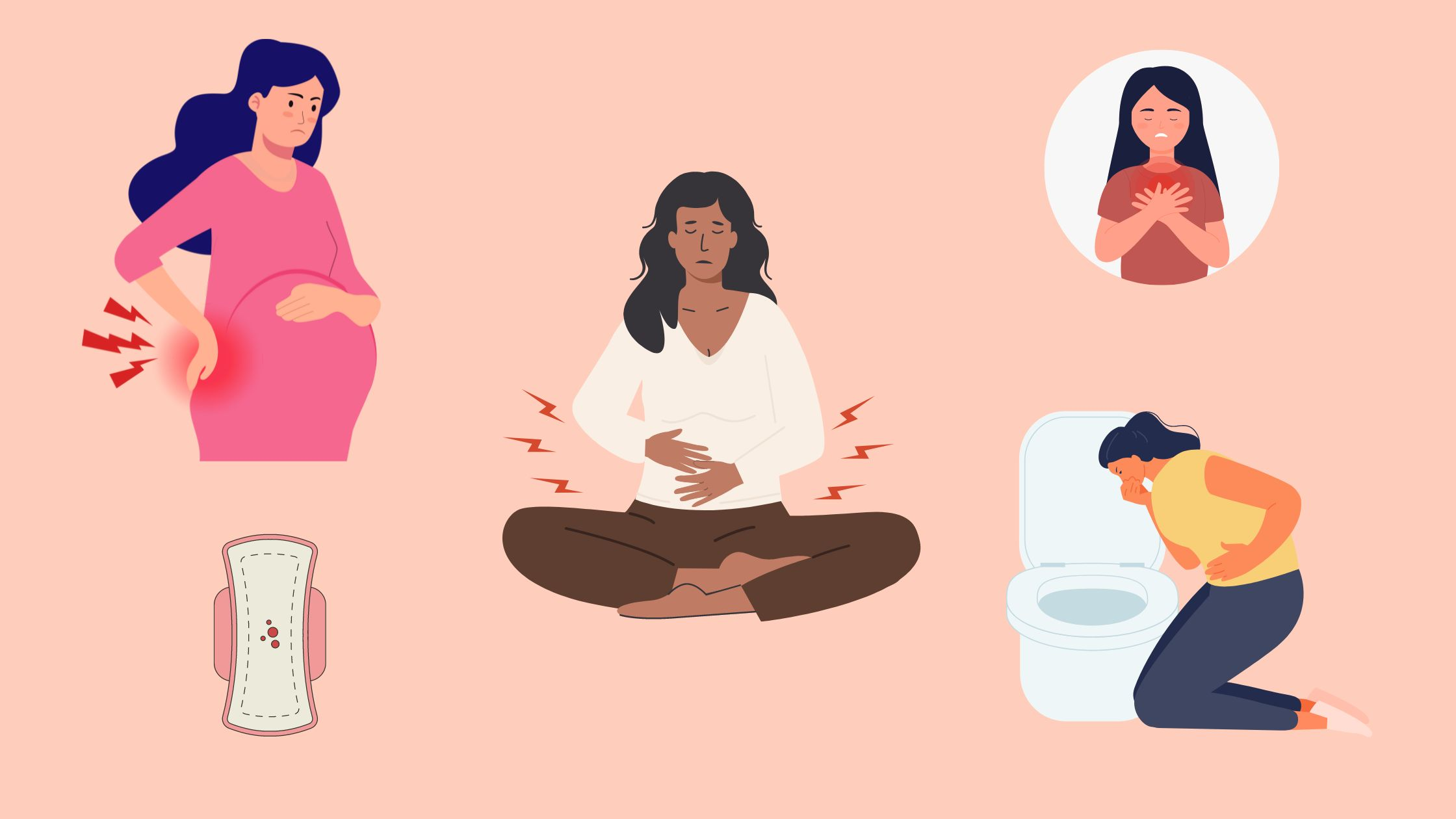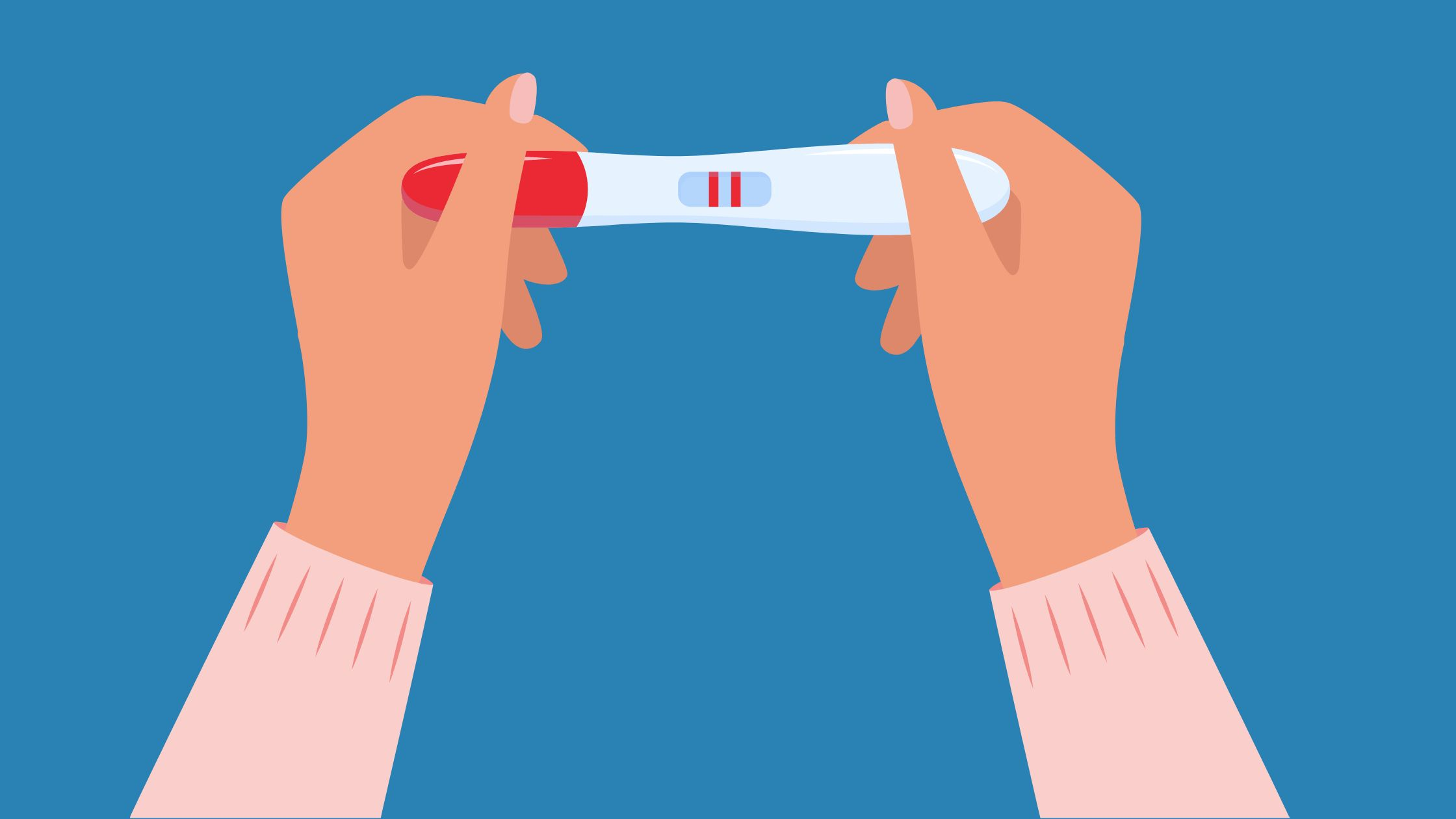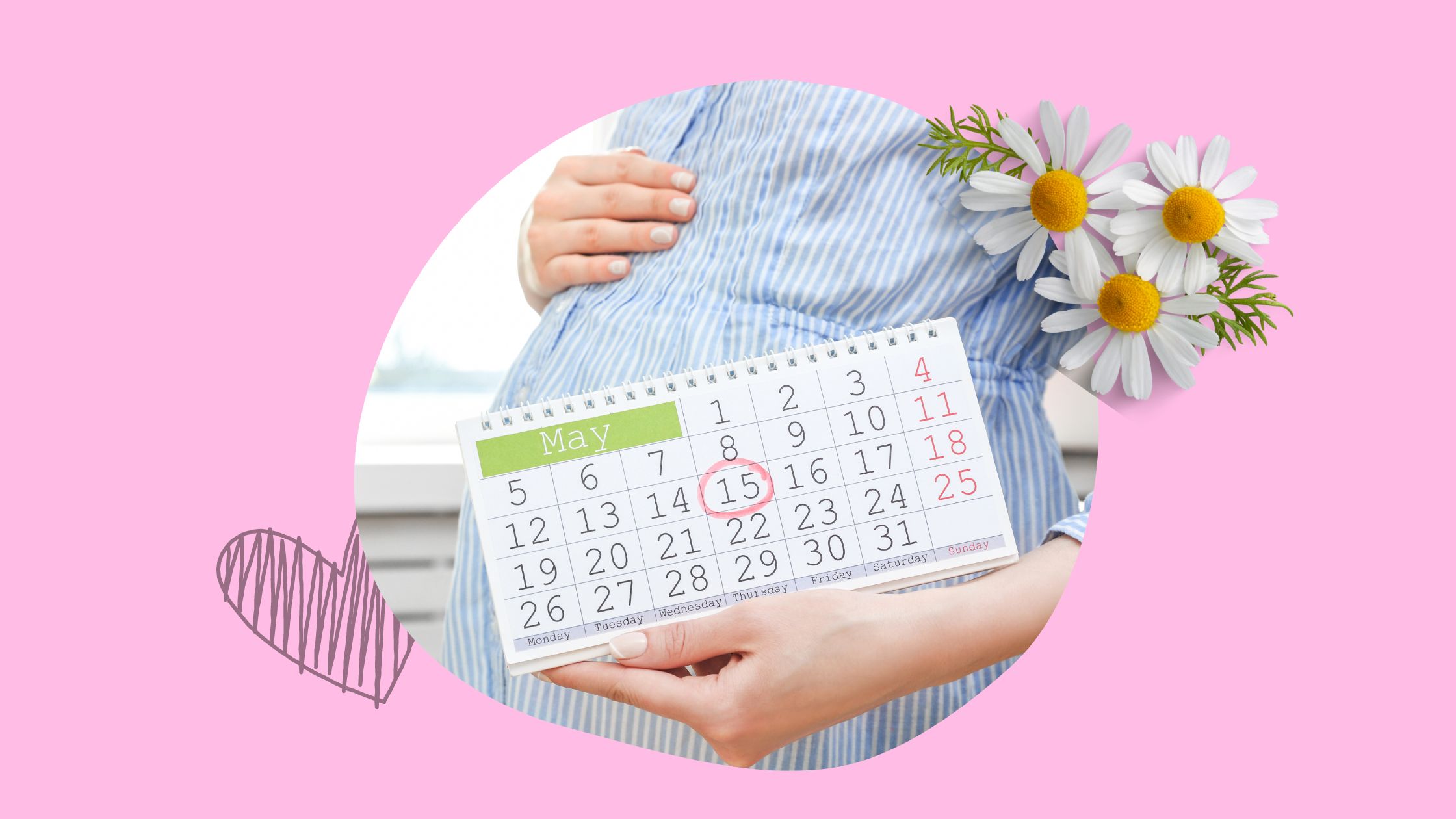Can you notice pregnancy signs just 4 days after ovulation? Or is 4 DPO too soon to know if you’ve successfully conceived?
When you’re trying to conceive (TTC), every twinge, every mood swing, and every craving can feel like a potential sign of pregnancy.
You might ask, “Is 4 DPO too early to feel anything?”
Well, 4 days past ovulation is a bit of a gray area. While most pregnancy symptoms typically kick in around the time of a missed menstrual cycle, some women swear they’ve felt signs earlier.
While starting symptom-spotting is common, especially when you’re eager to conceive, remember that early pregnancy symptoms can mimic pre-menstrual ones.
The definitive method to confirm pregnancy is to take a pregnancy test a day or two after your missed period. But let’s be honest; waiting can be challenging for some.
So, while it’s hard, try to be patient. Give it some time, and if you’re still feeling those symptoms closer to when your period is due, then it might be time to take a pregnancy test.
Let’s take a closer look at what is happening at 4 days since ovulation.
What Is Happening to Your Body at 4 DPO?
4 days post-ovulation is an early phase in your menstrual cycle. It is the period between ovulation and the next menstrual cycle. Hormones like progesterone and estrogen rise, preparing the uterus for a potential pregnancy.
If an egg released during ovulation meets a sperm, it transforms into a zygote. This zygote travels through the fallopian tubes. About 4 days past fertilization, the zygote splits into 16 super-charged cells and becomes a morula. This morula doesn’t stop there; it keeps splitting until it’s a blastocyst, packed with around 50 to 60 cells. Eventually, it’ll level up to become an embryo.
4 days past ovulation, it’s either a morula or an early-stage blastocyst. The zygote’s journey to the uterus typically takes more than 4 days, explaining the lack of pregnancy symptoms at 4 DPO.
Therefore, by 4 DPO, if no conception has happened, the uterine lining will shed, and you will soon get your period.
But, if fertilization occurs, the zygote will begin its journey toward the uterus. Once it anchors itself in the uterine wall (known as implantation), you’re pregnant!
Implantation generally occurs between 6 to 12 DPO. After this, the body starts producing the hormone hCG, which produces a positive pregnancy test result. Detectable hCG levels typically appear 7-12 days post-implantation.
However, hormonal changes might be noticeable by 4 DPO. Many women are keenly aware of bodily changes when trying to conceive. While some might notice early signs, it’s common not to feel pregnant at this stage.
Can Implantation Happen 4 DPO?
It is scientifically improbable for implantation to occur as early as 4 DPO. At this time, the fertilized egg is likely still en route to the uterus.
Implantation is a critical phase in the early stages of pregnancy. It typically occurs between 6 and 12 days DPO, with the 8 to 10 day window being the most common.
Can You Have Implantation Cramps at 4 DPO?

Many women might experience cramping at 4 DPO. But this doesn’t automatically indicate pregnancy. Conversely, it doesn’t rule it out either.
Implantation takes place between 6 to 8 DPO. Thus, the likelihood of it occurring at 4 DPO is exceptionally slim.
So, why the 4 DPO cramps? These cramps might arise due to a surge in progesterone levels, which can mimic pre-menstrual symptoms.
On the other hand, the onset of pregnancy also triggers hormonal shifts. The corpus luteum, which surrounds the egg, releases progesterone and estrogen. These hormones prepare the uterus, thickening its lining in anticipation of a developing embryo. An increase in progesterone can lead to cramps and can also decelerate digestion, adding to abdominal discomfort.
Early pregnancy can bring about a range of sensations, including:
1. Round Ligament Pain: This typically happens later in pregnancy. However, it’s not unheard of in the early stages. This pain is due to the uterus and its ligaments stretching, preparing for the baby’s growth, leading to brief, sharp discomfort.
2. Digestive Discomfort: The sudden uptick in progesterone can disrupt digestion, potentially causing mild cramps at 4 DPO.
3. Implantation: This can lead to subtle cramps – gentle pull or tingle – localized to one side of the abdomen or lower back. Occasionally, it might also result in light bleeding, which can occur roughly from 7 DPO to the expected period date. The pain is softer, and the spotting is lighter than you’d experience during menstruation.
While some might not sense anything during implantation, others might feel cramps at various stages.
Should you experience intense cramping accompanied by significant bleeding, consult a healthcare professional to eliminate the possibility of an ectopic pregnancy.
Early Pregnancy Symptoms at 4 DPO

You might be eager to know if you’re pregnant at 4 DPO. But spotting early pregnancy signs at 4 DPO might be a bit premature.
Pregnancy symptoms emerge when your body starts producing hCG, a hormone activated post-implantation. And at 4 DPO? The egg is probably journeying through the fallopian tube, meaning implantation hasn’t begun.
While some women are convinced they detect early changes, it’s important to distinguish between potential pregnancy indicators and typical menstrual cycle symptoms. They often overlap.
The real indicators generally kick in around implantation, usually between 6 and 12 DPO. Once this process begins, hCG levels increase, revealing some initial pregnancy signs.
However, it’s worth noting that every woman’s experience is different. Some may sense subtle changes now, while others might not notice anything.
If you’re highly attuned to your body and believe you’re observing early signs, here are some symptoms you might encounter:
1. Fatigue
Feeling tired as early as 4 DPO is a potential early pregnancy symptom, mainly due to the surge in pregnancy hormones.
While many women report feeling tired, especially in the first trimester, fatigue alone isn’t a conclusive indicator of pregnancy.
There could be various reasons for feeling tired at 4 DPO, and pregnancy is just one of them.
Indeed, fatigue experienced during pregnancy is profound, given that your body is nurturing a new life after all!
However, seeking medical advice is crucial if this exhaustion interferes with your daily activities, as it might indicate an iron deficiency or another underlying condition.
2. Bloating
Are you feeling an unmistakable sensation of bloating around 4 DPO? You’re not alone! Many women have reported this as a potential early sign of pregnancy.
Imagine this: a gentle fullness in the abdomen, a bit more gas than usual, or even some mild stomach discomfort. While it might be tempting to brush it off as just another post-ovulation quirk, there’s a chance it could be an early pregnancy symptom.
A rise in progesterone levels marks early pregnancy. This progesterone boost can take your digestive system on a slower ride, leading to that familiar bloated feeling and, sometimes, even constipation.
3. Nausea
Feeling a bit queasy? Nausea or morning sickness is one of the most common early signs of pregnancy. But not everyone gets hit with the nausea train this early. In fact, only about 10% of pregnant women start feeling nauseous before they even miss their period.
So, if you’re at 4 DPO and your stomach’s as calm as a summer’s day, don’t sweat it. It’s still super early in the game.
4. Discharge
During pregnancy, there’s a noticeable change in vaginal discharge. This discharge, known as leukorrhea, becomes thicker and may appear creamier with a pale yellow tint.
While leukorrhea can occur at various menstrual cycle stages, its volume significantly increases during pregnancy. It’s a natural and expected change, indicating the body’s preparation for the growing fetus.
5. Cramps
Abdominal cramping can signify early pregnancy or pre-menstrual syndrome (PMS). Some women might experience light cramping as early as 4 days after ovulation, suggesting the possibility of pregnancy.
However, cramping around ovulation or just before your period is also typical. Given that cramps during early pregnancy and period cramps are hard to differentiate, relying solely on cramping as an indicator of pregnancy isn’t reliable.
6. Spotting
Spotting can sometimes be an early sign of pregnancy, often called implantation bleeding. However, at 4 DPO, it’s relatively early for implantation.
So, if you’re spotting at 4 DPO, it’s unlikely to be due to implantation, as the fertilized egg probably hasn’t settled into the uterine lining yet. This implantation process can cause tiny blood vessels in the uterine wall to break, leading to light bleeding.
At this stage, spotting could be related to ovulation or other factors. If you’re concerned about spotting around 4 days past ovulation, checking with your doctor to rule out other causes is a good idea.
And while some women might notice implantation bleeding in the days following 4 DPO, not everyone does. In fact, many women might miss it entirely since it’s often so subtle.
7. Breast Tenderness
Around 4 days past ovulation, some women might notice their breasts feeling heavier, more sensitive, or even experiencing occasional sharp pains. This could be due to the body gearing up for a pregnancy, with hormone levels rising in preparation.
However, these same symptoms can also precede a menstrual period. So, while tender breasts hint at early pregnancy, they can also signal that your period is on its way.
Other symptoms that you may experience within the first trimester of pregnancy include:
- Food cravings
- Food aversions
- Mood swings
- headaches
- constipation
- Nasal congestion
- Frequent urination
What to Do if You Don’t Have Pregnancy Symptoms at 4 DPO?
At 4 days past ovulation, it’s common not to experience any early pregnancy symptoms. If you’re symptom-free, don’t stress! Most women don’t notice signs this early.
While you might be eager to know, it’s too soon for a pregnancy test. The best approach is to wait until you miss your period for an accurate result.
When’s the Best Time to Take a Pregnancy Test?

To get a positive pregnancy test result, hCG (also known as the pregnancy hormone) needs to be high enough to be detected by a pregnancy test. Therefore, take a pregnancy test a day or two after your missed cycle, which is around 13 to 15 DPO. This gives your hCG levels ample time to rise, making the test more accurate.
Waiting about three weeks after conception might be a good idea if your periods are irregular.
What Does It Mean to Get BFP at 4 DPO?
Getting a big fat positive (BFP) as early as 4 DPO is extremely rare.
Pregnancy tests detect the presence of the hormone hCG (human chorionic gonadotropin), released upon the embryo’s implantation into the uterine lining.
The average time for implantation is between 6-12 days after ovulation. At 4 days post ovulation (DPO), the implantation process might not have begun, making it highly unlikely for the pregnancy test to detect any hCG even if fertilization occurred. HCG levels typically aren’t detectable until around 9-11 DPO.
If you do get a BFP at 4 DPO, it might suggest a potential pregnancy. In such cases, it’s advisable to wait until after your missed menstrual period, and then retake the test for a more definitive result.
Can You Get BFN at 4 DPO and Still Be Pregnant?
Yes, you can!
If your pregnancy test reveals a big fat negative (BFN) at 4 DPO, but you suspect you’re pregnant, don’t lose hope. It could be too early for detection.
The fertilized egg is likely still moving toward the uterus. Even if implantation is underway, your body may still need to produce high hCG levels for detection.
It’s recommended to test after your missed period for more accurate results.
Takeaway
- Pregnancy symptoms at 4 DPO are unlikely due to the absence of implantation.
- By this time, the body typically hasn’t started releasing hCG, the pregnancy-confirming hormone.
- Symptoms such as nausea, bloating, cramping, breast tenderness, and fatigue can occur but shouldn’t be mistaken for pregnancy indicators.
- Receiving a BFN instead of a BFP at 4 DPO is normal.
- The optimal time to take a pregnancy test is a day after a missed period.
References
Gadsby R, Barnie-Adshead AM, Jagger C. A prospective study of nausea and vomiting during pregnancy. Br J Gen Pract. 1993 Jun;43(371):245-8. Erratum in: Br J Gen Pract 1993 Aug;43(373):325. PMID: 8373648; PMCID: PMC1372422.Freeman EW, Sammel MD, Liu L, Gracia CR, Nelson DB, Hollander L. Hormones and menopausal status as predictors of depression in women transitioning to menopause. Arch Gen Psychiatry. 2004 Jan;61(1):62-70. doi: 10.1001/archpsyc.61.1.62. PMID: 14706945.Evers JL. Female subfertility. Lancet. 2002 Jul 13;360(9327):151-9. doi: 10.1016/S0140-6736(02)09417-5. PMID: 12126838.Wilcox, A.J., Baird, D.D., & Weinberg, C.R. (1999). Time of implantation of the conceptus and loss of pregnancy. New England Journal of Medicine, 340(23), 1796-1799.Freeman EW, Sammel MD, Liu L, Gracia CR, Nelson DB, Hollander L. Hormones and menopausal status as predictors of depression in women in transition to menopause. Arch Gen Psychiatry. 2004 Jan;61(1):62-70. doi: 10.1001/archpsyc.61.1.62. PMID: 14706945.Barnhart KT, Sammel MD, Gracia CR, Chittams J, Hummel AC, Shaunik A. Risk factors for ectopic pregnancy in women with symptomatic first-trimester pregnancies. Fertil Steril. 2006 Jul;86(1):36-43. doi: 10.1016/j.fertnstert.2005.12.023. Epub 2006 May 30. PMID: 16730724.Leach RE, Ory SJ. Modern management of ectopic pregnancy. J Reprod Med. 1989 May;34(5):324-38. PMID: 2659790.Niebyl JR. Clinical practice. Nausea and vomiting in pregnancy. N Engl J Med. 2010 Oct 14;363(16):1544-50. doi: 10.1056/NEJMcp1003896. Erratum in: N Engl J Med. 2010 Nov 18;363(21):2078. PMID: 20942670.
